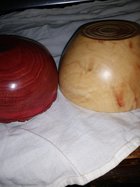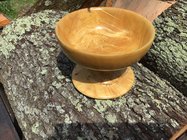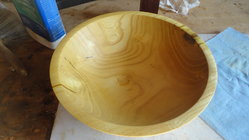I used walnut oil on a boxelder candy dish and waited 24 hours to buff. Didn't get really good results like I wanted. Did I not wait long enough for the walnut oil or does box elder just not polish as well as mulberry? That was the bowl I did at the same time.
I did learn I'm going to need more lights even though I don't think my scratches are sanding related because they are too random shaped. I think they might be from my finger nails. Just a couple (other than the ones you really have to be looking for) but I was shooting for no scratches. Guess it's not possible.
Is there any fixing the box elder by re polishing at a later date?


I did learn I'm going to need more lights even though I don't think my scratches are sanding related because they are too random shaped. I think they might be from my finger nails. Just a couple (other than the ones you really have to be looking for) but I was shooting for no scratches. Guess it's not possible.
Is there any fixing the box elder by re polishing at a later date?




